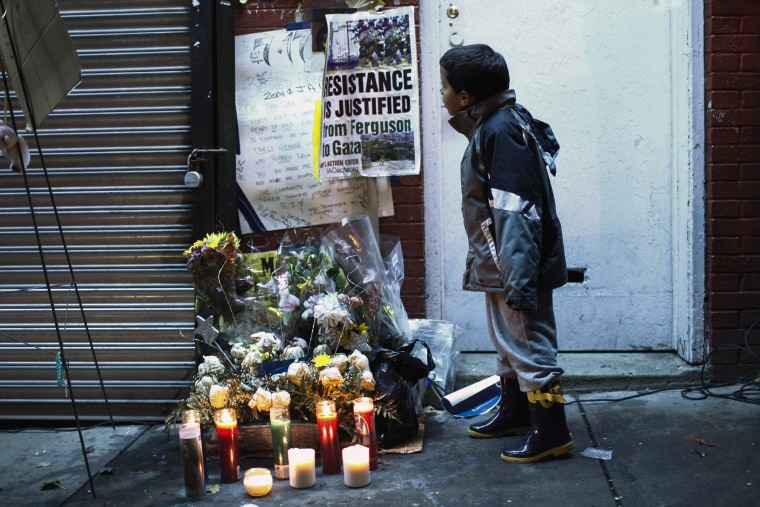Newly released information on the Staten Island grand jury that saw the case of Eric Garner -- an unarmed man who died after being placed in a chokehold by a New York City police officer -- opens just a small window into the type of evidence that was presented to the panel before it declined to indict the officer responsible for Garner's death.
Related: Grand jury doesn’t indict in Eric Garner killing
Evidence and testimony presented before a grand jury is typically sealed. But on Thursday, a New York court granted a request from the Richmond County district attorney's office to release limited information on the grand jury process in a case that has contributed to boiling resentment over deadly policing practices and spurred rounds of protests nationwide.
The grand jury -- which first convened in September -- heard testimony from 50 witnesses and saw 60 exhibits presented as evidence, according to the court order. Of the dozens of witnesses who testified before the panel, 22 were civilians. The rest were police officers, emergency medical personnel and doctors.
What remains unknown are the specifics of what was shown to grand jury panelists or whether any charges were recommended against NYPD officer Daniel Pantaleo. According to court documents, the grand jury panelists were instructed on the laws regarding a police officer's use of physical force in making an arrest. Medical records outlining the treatment Garner received and autopsy photos of his body were also provided, along with records of NYPD policies, procedures and training.
And unlike with many fatal encounters between citizens and police, the Staten Island grand jury was able to see the final moments before Garner was declared dead, caught on tape by eye-witnesses just feet away. The panelists also saw four videos and additional photographs to help shape events at the scene.
A team of police officers approached Garner in July after suspecting that he was selling loose, untaxed cigarettes. Garner, a 43-year-old who suffered from asthma, was later taken to the ground by a chokehold method that has been deemed illegal and out of practice. The New York City Medical Examiner ruled Garner's death a homicide.
Related: Eric Garner decision pushes many closer to breaking point
Within hours of the grand jury's final announcement Wednesday, crowds quickly gathered throughout Manhattan in protest, and more are expected across the country into Thursday evening. News of the decision comes on the heels of several other incidents around the country where police altercations with African Americans turned deadly. Last week, a St. Louis grand jury decided to not indict a white police officer who shot and killed unarmed black teen Michael Brown in Ferguson, Missouri. In Brooklyn, New York, 28-year-old Akai Gurley was shot and killed by a police officer who described the shooting as an accident. And in Cleveland, Ohio, 12-year-old Tamir Rice was fatally shot by a white police officer after playing with a toy pistol.
